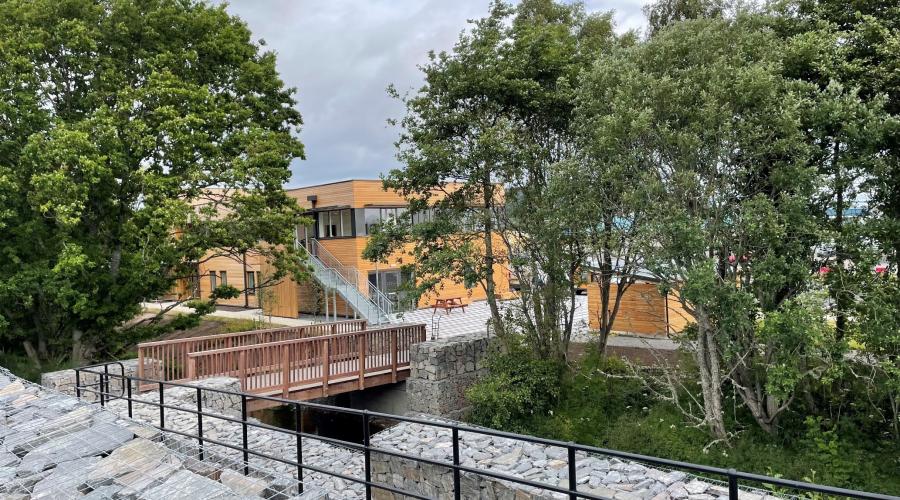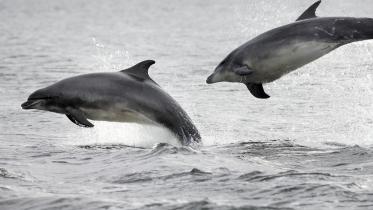
Green Infrastructure Project Update - A Carse for celebration
Transformation it seems is all around. Some of it is unwelcome, think climate change and biodiversity loss. Other changes are greeted with open arms, such as sustainability, Nature-based Solutions and urban regeneration. In Inverness a green infrastructure project is set to deliver a transformation of the most positive variety.
As green infrastructure projects go The Carse Outdoor Hub scores highly on several fronts.
Essentially the creation of a new centre, with community facilities, regenerating an area of derelict ground, it borders residential areas with some of the most deprived SIMD figures in the Highlands, and will improve links between communities whilst enhancing and making better use of good greenspace.
Driving the project will be staff from Scottish Canals who will employ a Community Engagement Officer.
That’s an exciting development and one which enthuses Martin Faulkner, Project and Funding officer at NatureScot, and a strong advocate of the work planned. “The Community Engagement post is a real game-changer,” he feels. “They will work in and around the canal side communities and the wider Inverness population, with a focus on deprived communities, to provide a programme of activities suitable for all ages and abilities. Getting involved with schools is key to ensuring that young people make the most of this greenspace. The series of planned walks and talks will help too. By harnessing the draw of the Local Nature Reserve, and improving access to the reserve, I sense that volunteering and mental health awareness dividends are also likely.”
Positioned on the banks of the Caledonian Canal the new facility will provide a social, training and activity centre and engage local people with an enticing range of activities on their own doorstep. It promises to be a boon for several districts in Inverness including South Kessock, Merkinch, Scorguie and Dalneigh.
Residents can anticipate a hub that embraces a range of positive green infrastructure features, including a green roof on the centre itself, and nature based water management at ground level. Other funders are supporting renewable energy provision through air source heat pumps, smart metering, and low consumption fittings. All of this is ensuring an energy efficient building. In a place-making sense, and with an eye on carbon footprint issues, it scores highly.
But this project is about much more than bricks and mortar. What goes on in and around the hub is going to be equally important.
As Martin noted “There is so much to anticipate with this project. For example, the new paths connecting residential streets with the canal basin, and the Merkinch Local Nature Reserve, will be a real improvement in coaxing people to make greater use the area. You have to welcome also the sustainable means of dealing with excess run off during storm events. When you consider that the project includes cycle parking and storage, along with alterations to the watercourse running through the site which bring biodiversity and habitat improvements then you get a real sense of the scale and ambition of this marvellous project. It’s a northern gem.”
In essence this is going to be the epitome of a multi-functional space. By opening up access, Merkinch Local Nature Reserve will be more available as an outdoor learning space, whilst neighbouring outdoor activity organisations will be able to use the hub as a teaching base. Add to the mix meeting spaces for the community and you appreciate that this building can regenerate not only the environment here but the social connections that help bind communities.
The hub is geared to helping local people and visitors to take part in a range of pursuits including watersports, cycling and organised health walks. The leisure activities will help address pressing issues around health and social problems.
Bringing outdoor groups, social enterprises and projects together under one roof means that this part of Inverness will be better placed to take a coordinated approach to delivering activities and cross-referring participants.
This is great news for an area of the city which had seen plans for a transformation of the area repeatedly stall. The site has been on the Vacant and Derelict Land Register for 15 years. Nevertheless, delays can be a blessing as well as a curse. This allowed for options to be considered at length, and for Scottish Canals plans to evolve into something that is a long-term improvement rather than a quick and temporary fix.
Key to the evolution of bolder plans was fruitful engagement with the local communities in this area.
Scottish Canals discussed plans and options from the outset with the residents of Merkinch, Scorguie, South Kessock, Dalneigh, and Clachnaharry. They in turn recognised that an opportunity existed to transform their area though this project. Locals were vocal in supporting the new outdoor hub project and helped identify a development which would not only benefit nearby communities and the canal, but also begin to change the dynamic of the industrial and business estate which form part of the area.
The first phase of the Treehouse Outdoor Hub project is progressing well with the completion of the “Treehouse” building in the Merkinch area of Inverness. The building was complete in Summer 2022 by Robertson Construction on behalf of Scottish Canals. Alongside Scottish Canals funding for this phase of the project has been provided by Nature Scot, alongside the Scottish Government’s Regeneration Capital Grant and Vacant and Derelict Land Fund, Sustrans and the Highland Council. The two-storey building offers office accommodation; training space; a large community meeting space and briefing room. Minor snagging works are underway to allow the office accommodation to be let and work is also underway with local stakeholders and community groups to develop a programme of works and activities that will be delivered from the community space.
The key outputs of the project directly fulfil the principle aim of the Green Infrastructure Fund to ‘increase participation in greenspace’. By creating a new building, with good green credentials, which provides a base and training centre for a wide range of local community organisations social cohesion is improved. Then the delivery of outdoor activities, outdoor learning, green health exercise activities, builds an impressive active layer on top of this impressive foundation.
Now that’s a cause for celebration in challenging times.
NOTE
The Green Infrastructure Fund Is part of the Scottish Government’s current European Regional Development Fund (ERDF) programme, which runs through to 2023. This is one of two ERDF Strategic Interventions led by NatureScot – the other is the Natural & Cultural Heritage Fund .
You can follow the European Structural Funds blog for ESF activities, news and updates. For twitter updates go to @scotgovESIF or use the hashtags #ERDF and #europeanstructuralfunds



